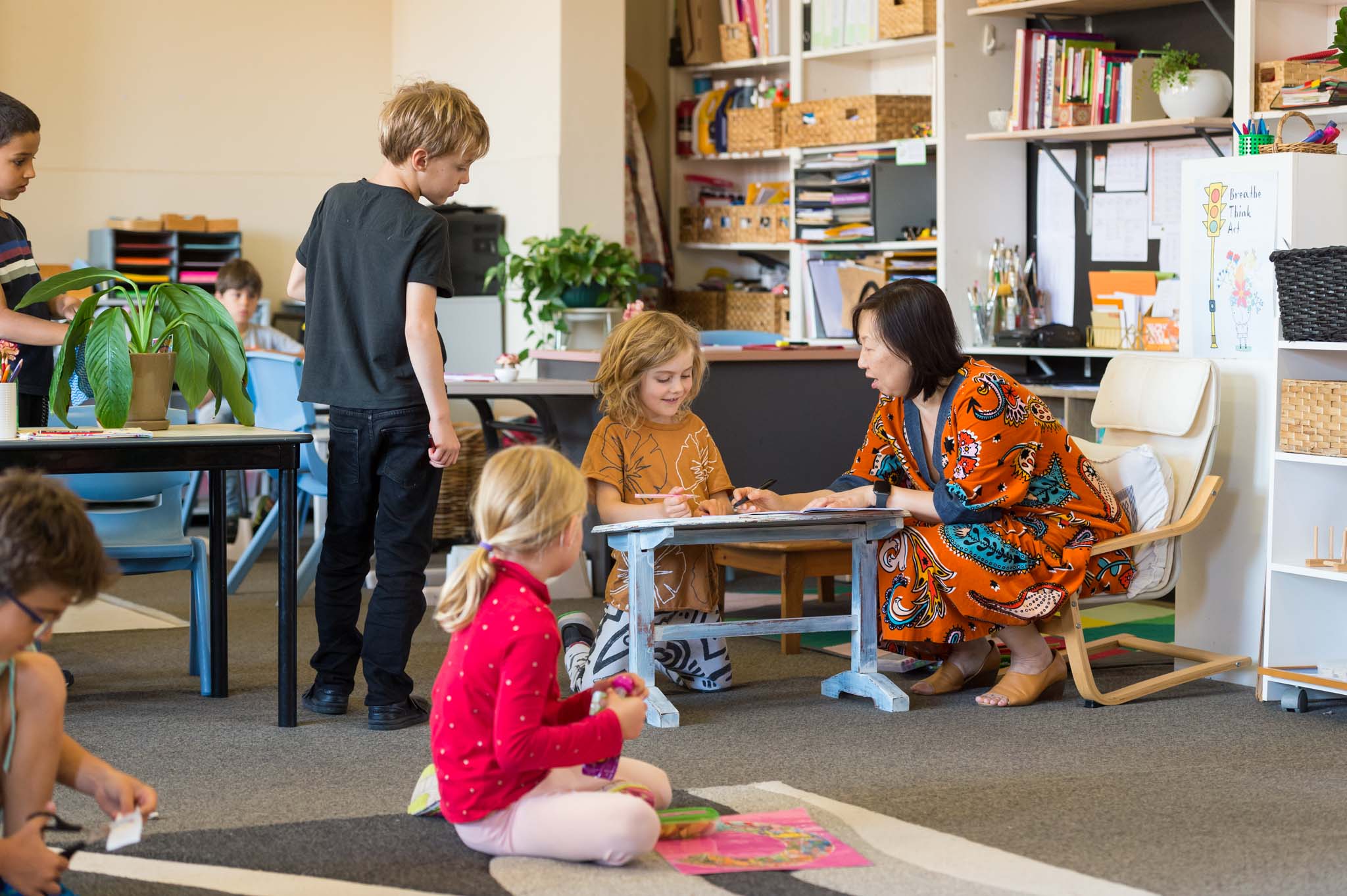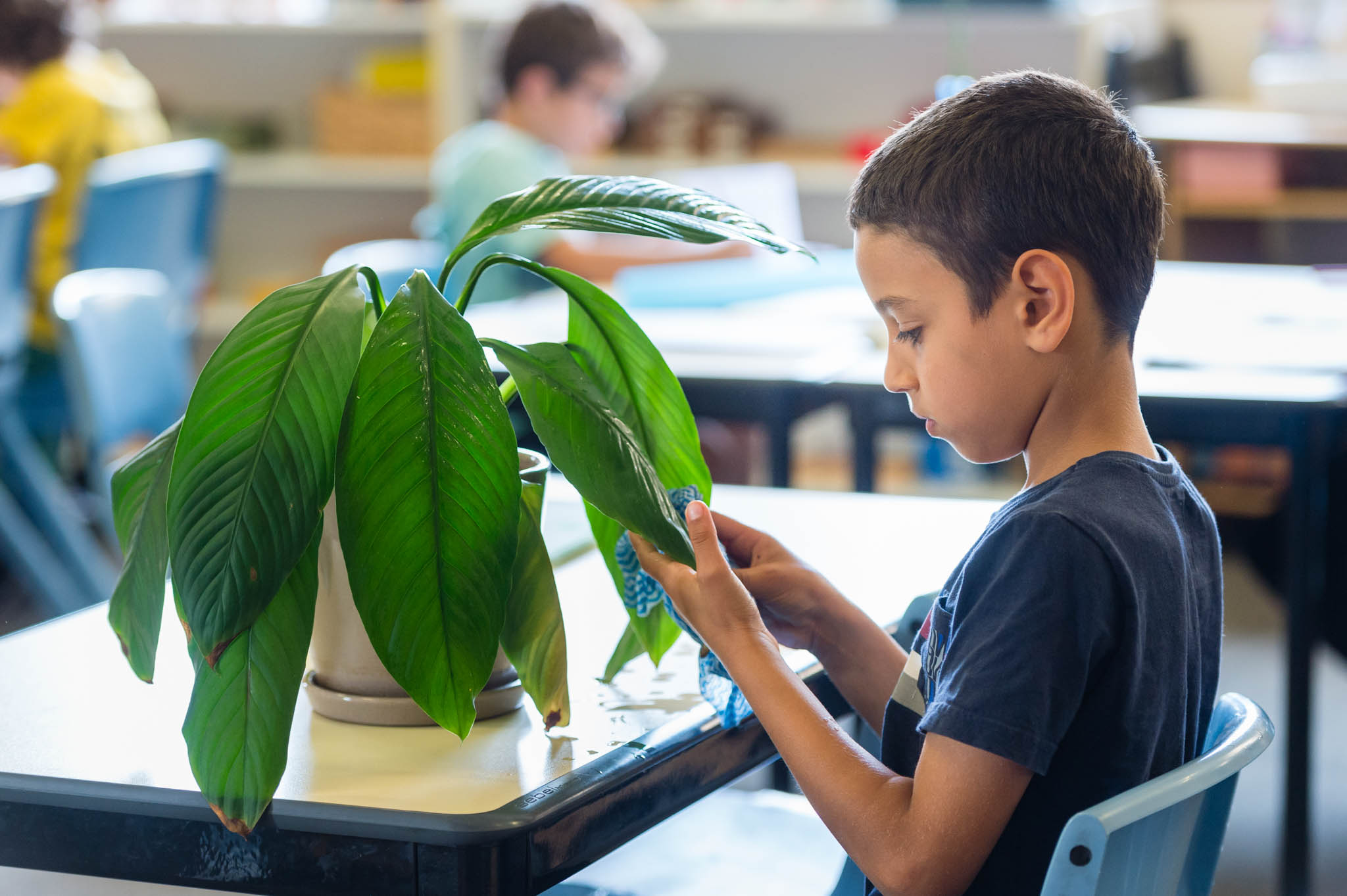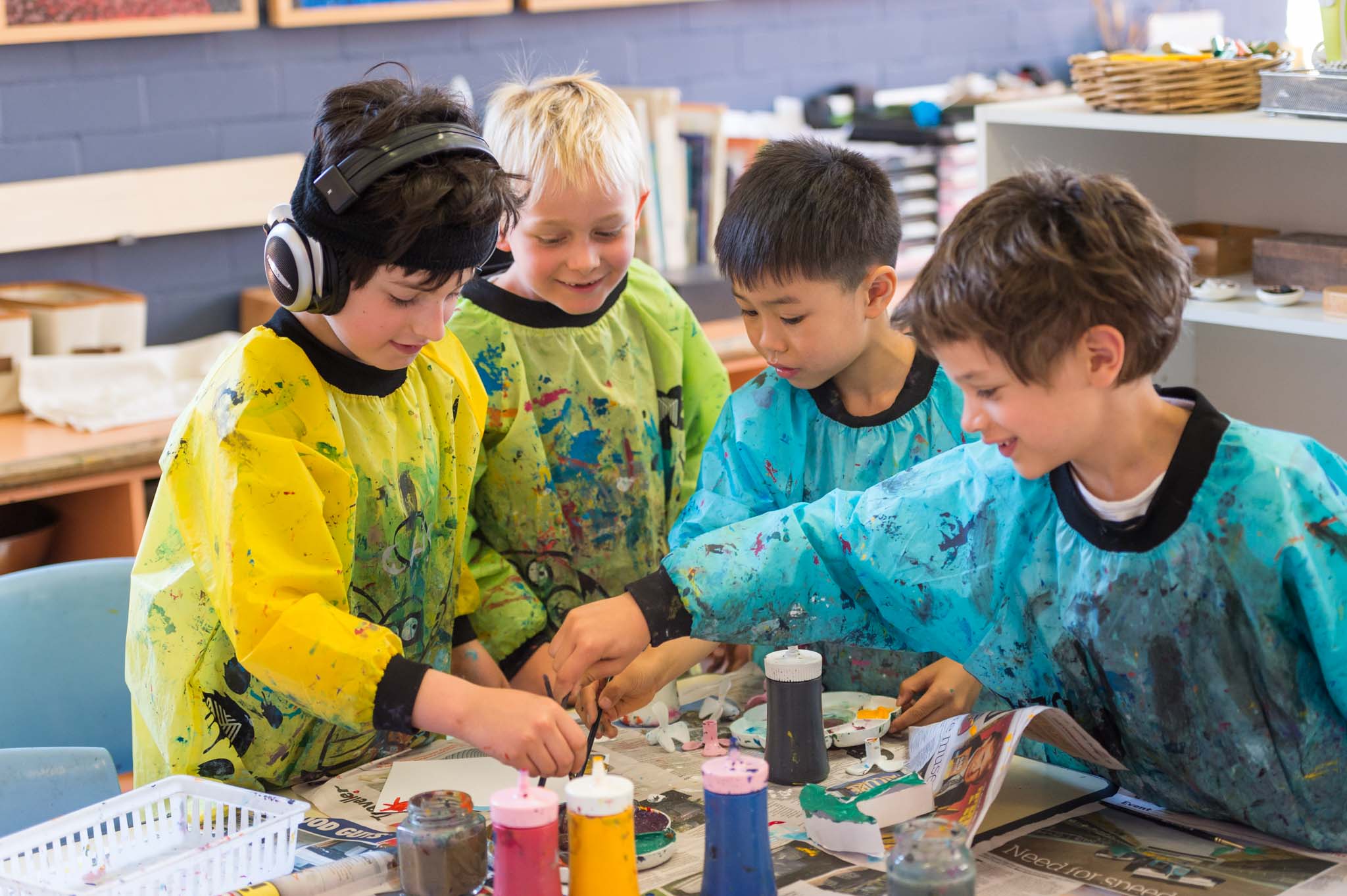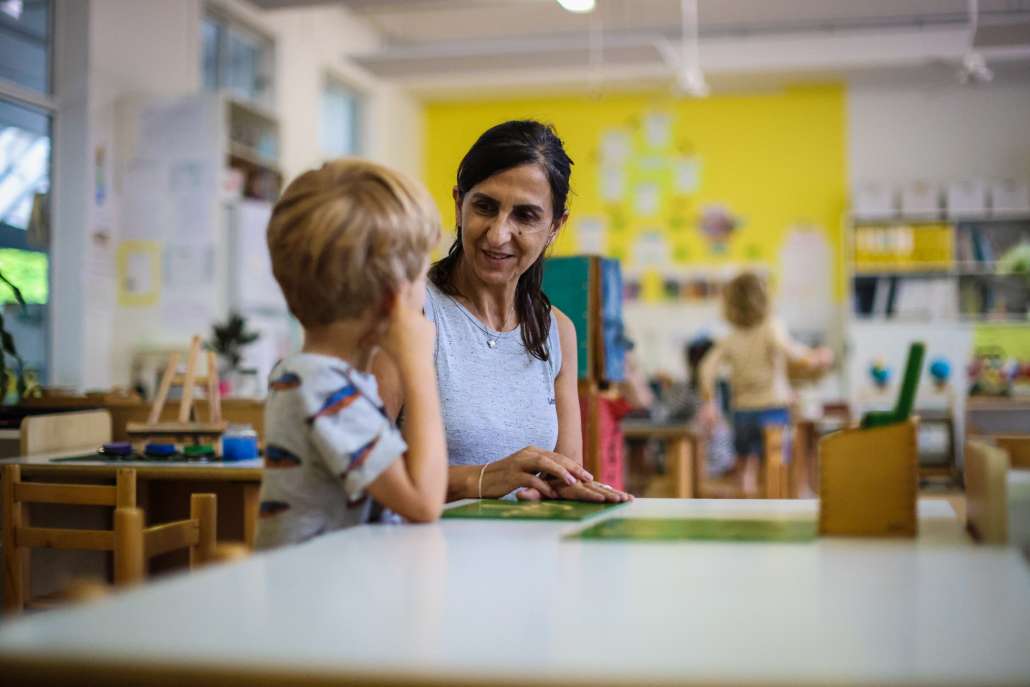Experiencing the Montessori classroom.
A child relaxes in a Montessori classroom. To encourage the child’s participation the atmosphere is inclusive, non-judgemental. Materials are organised by subject areas such as Language, Mathematics, Science, Sensorial, Practical Life, Geography and Culture. Children learn sitting on their own, in groups, at tables or on the floor, freely moving around the room to interact and share ideas with other groups.
See for yourself and take a Classroom Tour
Multi-aged rooms.
Montessori classes are multi-aged, covering a 3-year span with each class responsive to the learning capabilities and style of the individual child. Older children apply their learning and help teach the younger ones under the helpful eye of the teacher.


Less multi-device, more multi‑sensory.
Children are encouraged to free their minds, ask questions and find their own answers. They often learn with materials they can examine closely, to inspire new ways to think through and solve problems. Information technology is not employed until ways of thinking and questioning freely have been firmly established.
No homework; no tests.
Students are assessed through observation and project work, rather than ever demanding homework assignments and stressful tests. They’re encouraged to develop their capacity to critique their own work and that of others. The assessments not only include academic progress, but also broader intellectual capability including creativity and critical thinking, social and emotional development. NAPLAN tests are available to the children in years 3 and 5, but aren't compulsory.

